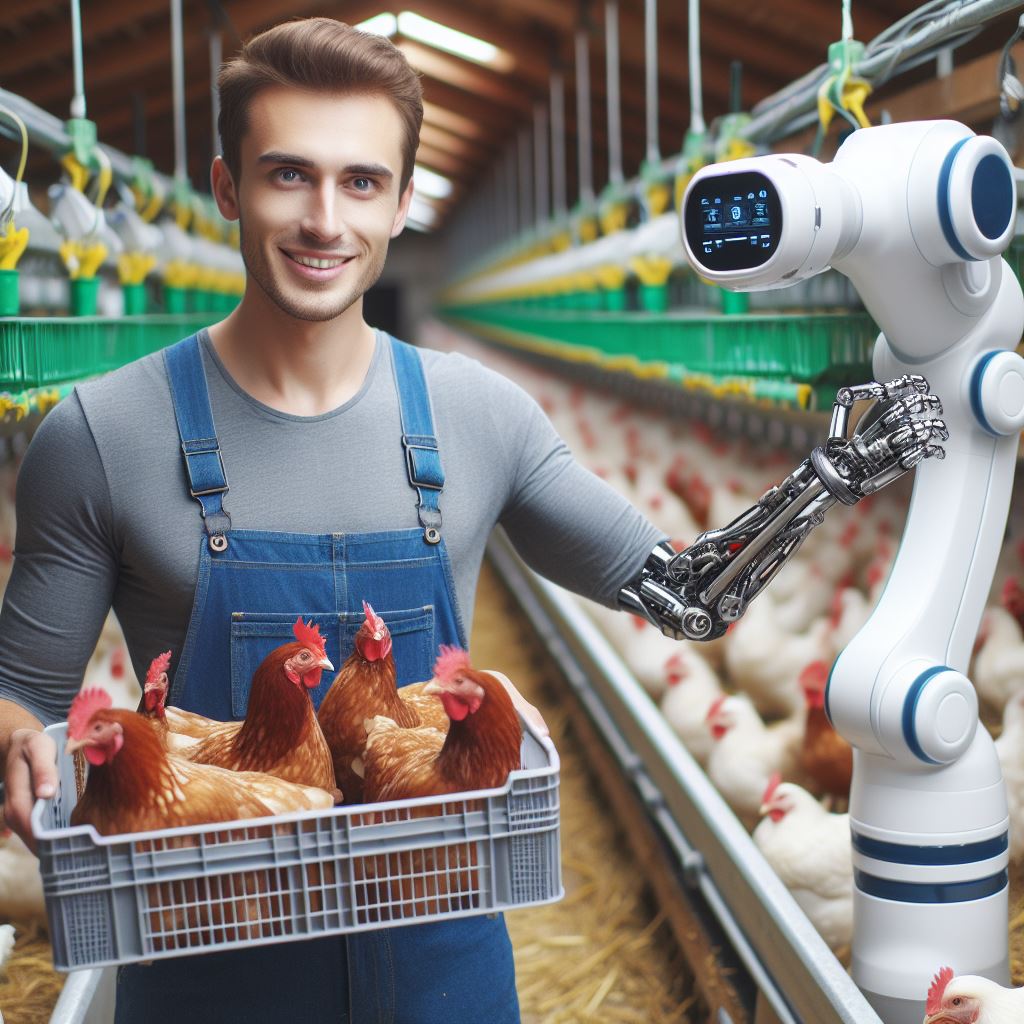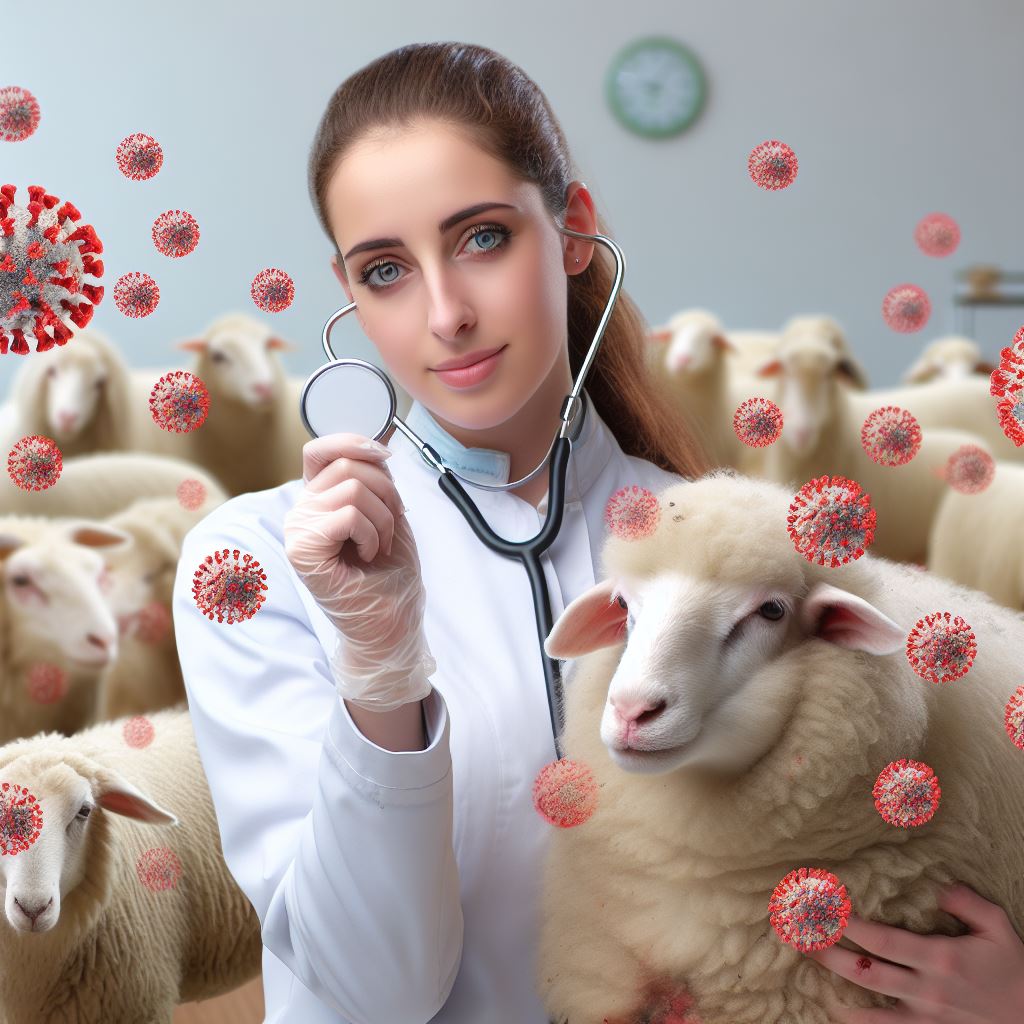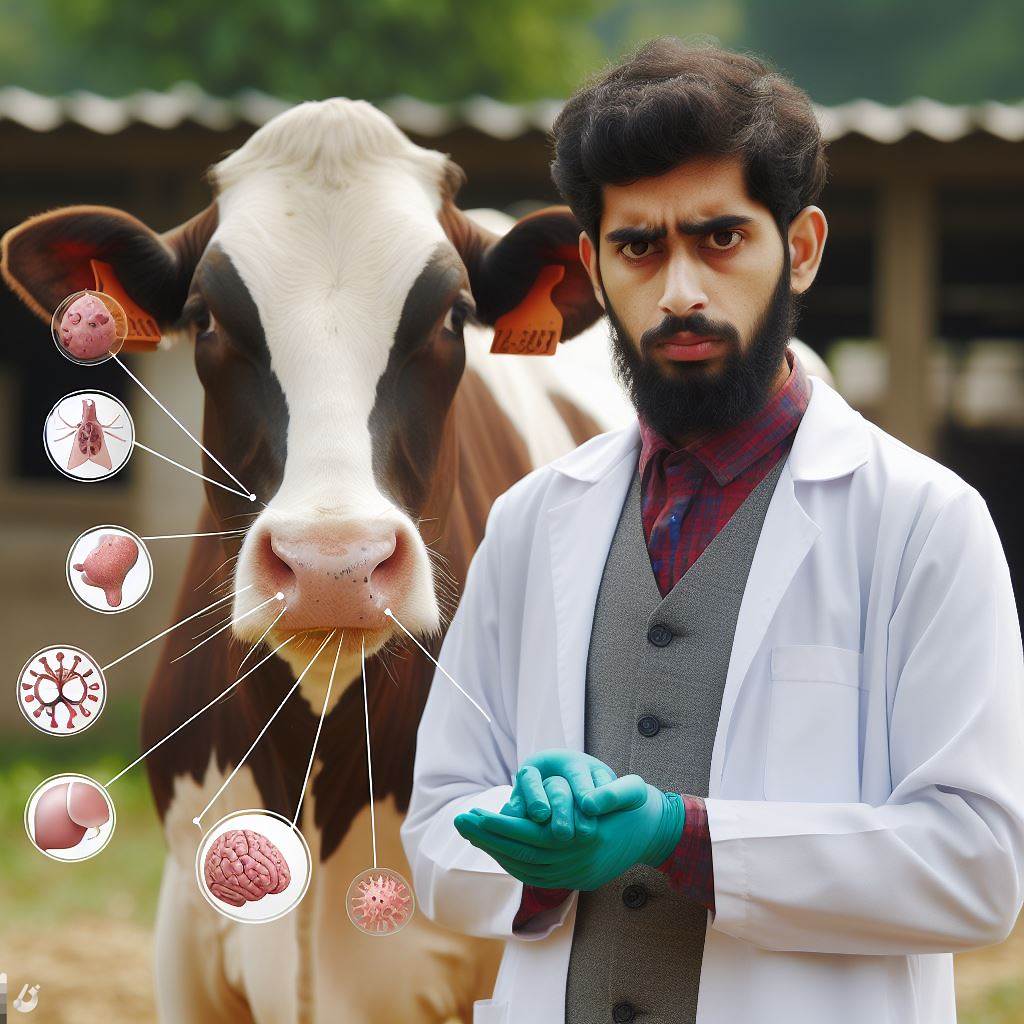Introduction
Briefly introduce the importance of veterinary diagnostic tools
In today’s world, veterinary diagnostic tools play a vital role in providing accurate and efficient diagnosis for animals.
These tools are fundamental for veterinarians to identify various diseases and conditions that may be affecting animals.
From X-rays to ultrasound machines, these diagnostic tools are indispensable in the field of veterinary medicine.
One significant advancement in veterinary diagnostic tools is the introduction of digital radiography.
This technology has replaced traditional film radiography, providing a clearer and more detailed image of an animal’s bones and internal organs.
Digital radiography not only expedites the diagnostic process but also reduces the exposure to radiation, benefiting both animals and veterinary professionals.
Mention the constantly evolving nature of these tools
The constantly evolving nature of these tools is worth mentioning.
With advancements in technology, diagnostic tools have become more precise, allowing veterinarians to detect even the slightest abnormalities in animals.
This evolution has led to improved accuracy, enabling veterinarians to provide better treatment plans for their patients.
Another groundbreaking tool in veterinary diagnostics is the use of ultrasound machines.
These machines have revolutionized the way veterinarians examine animals internally.
Ultrasound allows for non-invasive imaging and is particularly effective in diagnosing conditions such as pregnancy, tumors, and abnormalities in organs.
Lastly, veterinary diagnostic tools play a crucial role in diagnosing and treating animals.
The constant evolution of these tools ensures that veterinarians can provide accurate and efficient diagnoses, ultimately improving animal health and well-being.
With advancements like digital radiography and ultrasound machines, the field of veterinary medicine continues to progress, benefiting both animals and their caregivers.
Transform Your Agribusiness
Unlock your farm's potential with expert advice tailored to your needs. Get actionable steps that drive real results.
Get StartedTraditional Veterinary Diagnostic Tools
Traditional diagnostic tools used by veterinarians
- Physical Examination: Veterinarians rely on visual observation, palpation, and auscultation to assess animals’ health.
- Blood Tests: Common diagnostic tools to measure organ function, detect infections, and identify blood disorders.
- Urinalysis: Provides information about kidney function, urinary tract infections, and other health conditions.
- Radiographs: X-rays used to visualize bones, soft tissues, and organs for detecting fractures, tumors, and abnormalities.
- Ultrasound: Non-invasive imaging technique useful for evaluating organs, diagnosing pregnancy, and identifying abnormalities.
- Endoscopy: Procedure using a flexible tube with a camera to visualize and biopsy internal organs.
Limitations and drawbacks of these tools
- Subjectivity: Physical examination is influenced by the veterinarian’s experience and can be subjective.
- Invasive Procedures: Blood tests and endoscopy require handling animals and may cause discomfort.
- Limited Information: Traditional tools provide a limited view of the animal’s overall health and specific conditions.
- Expensive Equipment: Radiographs and ultrasound machines are costly to purchase and maintain.
- Interpretation Challenges: Interpreting radiographs and ultrasound images may require specialized training.
- Incomplete Results: Traditional tools may not always provide a definitive diagnosis, requiring further testing.
Although traditional veterinary diagnostic tools have been essential in animal healthcare, they have limitations.
These tools provide valuable information but often require additional tests for a more accurate diagnosis.
Despite the valuable insights provided by traditional veterinary diagnostic tools, these tools have limitations that can impede accurate and efficient diagnosis.
However, recent advancements have resulted in the development of more sophisticated diagnostic technologies.
Read: Poultry Management: Key Techniques
Emerging Technologies in Veterinary Diagnostics
The field of veterinary diagnostics has witnessed remarkable advancements in recent years. These emerging technologies have not only transformed the way diseases are diagnosed in animals but also revolutionized veterinary medicine as a whole.
Latest Advancements in Veterinary Diagnostic Tools
- Genomic Testing: One of the most significant breakthroughs in veterinary diagnostics is the advent of genomic testing. By analyzing an animal’s genetic material, veterinarians can identify genetic disorders, predict disease susceptibility, and even tailor personalized treatment plans.
- Molecular Diagnostics: Molecular diagnostics involve the detection and analysis of specific molecules in an animal’s body, such as DNA and proteins. This technology enables quick identification of infectious agents, genetic mutations, and cancer biomarkers, leading to timely and precise diagnostic outcomes.
- Imaging Techniques (MRI, CT Scans, etc.): Thanks to advanced imaging techniques like magnetic resonance imaging (MRI), computed tomography (CT scans), and ultrasound, veterinarians can visualize internal structures and organs with remarkable detail. These non-invasive imaging tools aid in diagnosing conditions such as bone fractures, tumors, and organ abnormalities.
- Portable Diagnostic Devices: Portable diagnostic devices have become increasingly popular in veterinary medicine. These compact and user-friendly tools allow veterinarians to conduct on-site tests, such as blood analysis, urine testing, and even electrocardiograms. Portable devices enhance the speed and convenience of diagnostics, especially in remote or emergency situations.
- Point-of-Care Testing: Point-of-care (POC) testing refers to diagnostic tests that can be performed at the location where the animal is being treated, rather than sending samples to a laboratory. POC tests enable rapid diagnosis of conditions like infectious diseases, nutritional disorders, and hormonal imbalances, leading to immediate initiation of appropriate treatments.
Revolutionizing the Field of Veterinary Medicine
These advancements in veterinary diagnostic tools have revolutionized the field in several ways:
- Timely and Accurate Diagnoses: The availability of advanced diagnostic technologies allows veterinarians to make quick and accurate diagnoses, leading to enhanced patient care outcomes. Early detection of diseases facilitates timely interventions, improving treatment success rates.
- Tailored Treatment Plans: Genomic testing and molecular diagnostics provide veterinarians with valuable insights into an animal’s genetic makeup and disease susceptibility. This information enables the development of personalized treatment plans, maximizing therapeutic efficacy and reducing the risk of adverse reactions.
- Non-Invasive Imaging: Imaging techniques like MRI and CT scans eliminate the need for invasive procedures, such as exploratory surgery, in many cases. These non-invasive methods minimize patient discomfort, shorten recovery times, and offer a more detailed assessment of an animal’s condition.
- Improved Accessibility: Portable diagnostic devices and point-of-care testing have made veterinary diagnostics more accessible, especially in remote areas or during emergencies. Veterinarians can now provide rapid and accurate diagnostic services without the need for sophisticated laboratory facilities.
- Veterinary Research and Development: These advancements in diagnostic tools have significantly contributed to veterinary research and development. The ability to analyze genetic material, detect molecular markers, and visualize internal structures with precision has paved the way for further scientific advancements in veterinary medicine.
Generally, the latest advancements in veterinary diagnostic tools, including genomic testing, molecular diagnostics, imaging techniques, portable devices, and point-of-care testing, have revolutionized the field of veterinary medicine.
These technologies have facilitated timely and accurate diagnoses, tailored treatment plans, and improved accessibility to diagnostic services, ultimately enhancing animal healthcare outcomes.
Read: Goat Rearing: Tips for Best Results
Benefits of Advanced Veterinary Diagnostic Tools
Advantages of using advanced tools in veterinary diagnostics
- Enhanced precision and efficiency in diagnosing veterinary conditions.
- Faster identification of diseases, leading to prompt treatment and improved outcomes.
- Increased ability to detect early-stage ailments, allowing for proactive intervention.
- Minimized reliance on invasive procedures, reducing stress on animals.
- Improved ease of use, enabling more veterinarians to employ advanced diagnostic techniques.
- Greater accessibility to cutting-edge technology, leveling the playing field among veterinary clinics.
- Enhanced ability to track treatment progress and adjust therapies as needed.
- Higher client satisfaction due to faster and more accurate diagnoses.
Improved accuracy and timeliness of diagnosis
- Advanced diagnostic tools provide veterinarians with a wealth of data, leading to more precise diagnoses.
- Quicker test results enable veterinarians to commence treatment promptly, potentially saving lives.
- Reduced waiting times for diagnostic reports alleviate anxiety for both pet owners and veterinarians.
- Refined tools aid in detecting and differentiating between similar symptoms, enhancing diagnoses.
- Accuracy in diagnosis leads to appropriate and targeted treatments, reducing unnecessary interventions.
Impact on animal health and overall well-being
- Earlier detection of diseases leads to earlier intervention, improving chances of successful treatment.
- Advanced tools help identify underlying health conditions, preventing potential complications.
- Prompt and accurate diagnosis allows for tailored treatment plans, optimizing recovery and quality of life.
- Veterinarians can monitor and reassess animal health more effectively through advanced diagnostic tools.
- Improved animal well-being results from timely detection and precise targeting of health issues.
- Enhanced diagnostic capabilities contribute to the overall advancement of veterinary medicine.
- Reduced misdiagnoses decrease the risk of unnecessary suffering and potential long-term health problems.
- Animals experience less discomfort as advanced diagnostic tools minimize invasive procedures.
Essentially, the benefits of utilizing advanced veterinary diagnostic tools are significant.
Veterinary diagnostics have seen an incredible leap forward, thanks to technological advancements.
The advantages include enhanced accuracy and timeliness of diagnoses, leading to faster treatments and better outcomes.
Moreover, these tools improve animal health and overall well-being by enabling early detection, preventing complications, and optimizing treatment plans.
As the veterinary field continues to evolve, the positive impact of advanced diagnostic tools on animal healthcare will become even more pronounced.
Read: Sustainable Livestock Farming Tactics

Concerns and Challenges
Address potential concerns regarding the adoption of new technologies
- Fear of job loss: Some veterinarians worry that advanced diagnostic tools may replace their role.
- Financial implications: Upgrading to new technologies can be costly, especially for smaller veterinary practices.
- Learning curve: Incorporating new tools requires additional training and time for veterinarians and support staff.
- Interference with the human-animal bond: Some veterinarians express concerns that relying too heavily on technology may compromise client relationships.
Challenges faced by veterinarians in implementing these advancements
- Resistance to change: Not all veterinarians embrace new technologies, leading to a reluctance in implementation.
- Integration with existing systems: Compatibility issues arise when new tools need to seamlessly integrate with current practices.
- Limited access to resources: Veterinary clinics in remote areas may have difficulty accessing the latest diagnostic advancements due to infrastructure limitations.
The need for proper training and expertise
- Complex technology: Advanced diagnostic tools require veterinarians to have a deep understanding of their intricacies.
- Interpretation accuracy: Proper training is essential to ensure accurate interpretation of diagnostic results.
- Avoiding misdiagnosis: Insufficient expertise in utilizing new tools can lead to misdiagnosis, affecting animal health outcomes.
- Continuing education: Veterinary professionals must consistently update their knowledge and skills to keep up with technological advancements.
Basically, the adoption of new veterinary diagnostic tools brings concerns and challenges that need to be carefully addressed.
Veterinarians may fear job loss, face financial implications, and need to allocate time for additional training.
The potential interference with the human-animal bond also needs to be considered.
Challenges in implementing these advancements include resistance to change, integration with existing systems, and limited access to resources.
Furthermore, proper training and expertise are crucial to maximize the benefits of these new tools, ensuring accurate interpretation and diagnosis.
Continuing education is necessary for veterinarians to stay updated with advancements in technology.
Despite these concerns and challenges, the advancements in veterinary diagnostic tools have the potential to greatly enhance animal healthcare and improve outcomes.
Read: Pig Farming Essentials: A Beginner’s Guide
Showcase Your Farming Business
Publish your professional farming services profile on our blog for a one-time fee of $200 and reach a dedicated audience of farmers and agribusiness owners.
Publish Your ProfileFuture Outlook
Potential advancements and improvements in veterinary diagnostic tools
In the rapidly evolving field of veterinary diagnostics, the future looks promising with potential advancements and improvements in diagnostic tools.
Ongoing research and development are focused on integrating cutting-edge technologies and innovations to enhance the accuracy, efficiency, and accessibility of veterinary diagnostics.
One of the most exciting areas of development is the use of artificial intelligence (AI) applications in veterinary diagnostics.
AI algorithms can analyze vast amounts of data and identify patterns that may go unnoticed by human veterinarians.
This technology has the potential to revolutionize diagnostics by providing rapid and accurate diagnoses, improving treatment outcomes, and reducing costs.
Mention ongoing research and development in the field
Another area attracting significant attention is wearable health monitoring devices for animals.
These devices, typically in the form of collars or tags, can continuously monitor vital signs, activity levels, and other health parameters in real-time.
This data can be synced with mobile apps or cloud platforms, allowing veterinarians to remotely monitor their patients’ health and detect early signs of diseases or abnormalities.
Ongoing research and development efforts are focused on enhancing the capabilities of these wearable devices, such as the integration of GPS tracking, temperature sensors, and even cameras for behavioral analysis.
The aim is to provide veterinarians with comprehensive and accurate health data that allows for timely interventions and personalized treatment plans.
The future possibilities for veterinary diagnostics
The future possibilities for veterinary diagnostics are vast.
With advancements in gene sequencing technologies, veterinarians may soon have the ability to identify a wide range of genetic markers for various diseases and conditions.
This knowledge can aid in early detection, accurate diagnosis, and even the development of personalized treatment plans based on an animal’s genetic predisposition.
Furthermore, advancements in imaging technologies, such as ultrasound, MRI, and CT scans, are expected to improve the accuracy and resolution of diagnostic imaging in veterinary medicine.
This will allow for better visualization of internal structures and abnormalities, aiding in more precise diagnoses and treatment planning.
The integration of telemedicine and teleconsultation services is also an exciting possibility for veterinary diagnostics.
Remote veterinary consultations can provide access to specialized expertise, reduce the need for traveling, and improve the efficiency of healthcare delivery in remote areas.
This can be particularly beneficial for livestock and exotic animal medicine.
Most importantly, the future of veterinary diagnostics holds great potential for advancements and improvements.
The integration of artificial intelligence, wearable health monitoring devices, and other cutting-edge technologies will revolutionize the field, offering veterinarians more accurate, efficient, and personalized diagnostic tools.
Continued research and development efforts will drive innovation and shape the future of veterinary medicine, ultimately benefiting the health and well-being of animals.
Conclusion
The ongoing advancements in veterinary diagnostic tools usher in a new era of precision and efficiency:
- Enhanced Accuracy: Modern tools promise higher accuracy in diagnosing various animal health issues, ensuring targeted treatments.
- Rapid Detection: Swift and precise detection of diseases allows for timely intervention, improving overall prognosis and animal welfare.
- Innovative Imaging: Cutting-edge imaging technologies offer detailed insights into animal anatomy, aiding in comprehensive diagnostic assessments.
- Point-of-Care Solutions: Portable and point-of-care diagnostic tools empower veterinarians with real-time results, expediting decision-making.
- Integration of AI: Artificial intelligence integration optimizes diagnostic processes, providing nuanced analyses for more informed veterinary decisions.
- Diverse Pathogen Identification: Tools capable of identifying a broad spectrum of pathogens contribute to a more thorough understanding of diseases.
- Non-Invasive Techniques: Non-invasive diagnostic techniques minimize stress for animals, improving the overall veterinary experience.
- Remote Monitoring: The ability to remotely monitor animal health enhances preventive care and facilitates early disease detection.
- Customized Treatment Plans: Precision diagnostics enable the formulation of personalized treatment plans tailored to individual animal health needs.
- Collaborative Veterinary Care: These advancements foster collaborative efforts between veterinarians, researchers, and technology developers, driving continual innovation.
With these advancements, veterinary professionals are better equipped to address emerging challenges and provide superior healthcare for diverse animal species.




